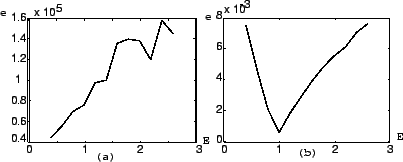
engineering & technology publications
ISSN 1759-3433
PROCEEDINGS OF THE SIXTH INTERNATIONAL CONFERENCE ON COMPUTATIONAL STRUCTURES TECHNOLOGY
An Inverse Identification Method from Dynamic Tests with Measurement Uncertainties
+Laboratory of Mechanics and Technology, ENS Cachan, France
*EADS CCR, Suresnes, France
- the insufficient knowledge of the dynamic behavior and crashworthiness of the materials involved,
- the often imperfectly known boundary conditions,
- the heterogenous state implied by damage and rupture localization.
Here, we will be focusing on the first aspect. The dynamic tests we are considering are dynamic compression tests on laminated plates based on Split Hopkinson Pressure Bar principle. These lead to imprecise measurements of forces and velocities. Thus, Problem (2) is encountered from the very beginning of the identification process. Then, the question which comes to mind is:
How can one formulate an identification problem in dynamics in such a way that the results would be accurate in spite of the great measurement uncertainties?
Our guiding principle, which was directly inspired by studies on
model updating in vibration [1], is to verify exactly,
during the identification process, the properties which are
considered to be reliable. The uncertain quantities are then taken
into account by minimizing a modified constitutive
relation error [2]. In this first work [3], we are
considering the simple problem of an elastic rod with
redundant displacement and force conditions at both ends, denoted
![]() and
and
![]() , which are assumed to be
uncertain. The identification of the Young's modulus
, which are assumed to be
uncertain. The identification of the Young's modulus ![]() is
carried out in two steps: for a fixed
is
carried out in two steps: for a fixed ![]() , the ill-posed problem
is reformulated as the minimization of:
, the ill-posed problem
is reformulated as the minimization of:
under the conditions:
| (54.2) |
One can note that the boundary conditions ![]() and
and ![]() are
related to the fields used in the minimization problem and,
therefore, can be different from the measured values
are
related to the fields used in the minimization problem and,
therefore, can be different from the measured values
![]() and
and
![]() . This minimization under constraints is
performed by introducing an appropriate number of Lagrange
multipliers, which leads to the simultaneous resolution of both a
direct problem and an adjoint (time-retrograde) problem related to
one another. The resolution methods will be discussed during the
presentation. Subsequently, the identification of the best
. This minimization under constraints is
performed by introducing an appropriate number of Lagrange
multipliers, which leads to the simultaneous resolution of both a
direct problem and an adjoint (time-retrograde) problem related to
one another. The resolution methods will be discussed during the
presentation. Subsequently, the identification of the best ![]() is
carried out using the same functional, whose gradient can be
calculated directly from the fields which are solutions to the
first problem with fixed
is
carried out using the same functional, whose gradient can be
calculated directly from the fields which are solutions to the
first problem with fixed ![]() . A numerical example, in which the
exact measurements were modified by up to
. A numerical example, in which the
exact measurements were modified by up to ![]() % on the average,
will be presented. The method presented here, which turns out to
be particularly robust, and another method inspired by
[4] will be compared.
% on the average,
will be presented. The method presented here, which turns out to
be particularly robust, and another method inspired by
[4] will be compared.
Work is currently underway to extend this method to elastic damage behavior, including the possibility of damage localization.
- 1
- P. Ladevèze and A. Chouaki, "Application of a posteriori error estimation for structural model updating", Inverse Problems, 15, 49-58, 1999. doi:10.1088/0266-5611/15/1/009
- 2
- P. Ladevèze, "A modelling error estimator for dynamical structural model updating", in Advances in Adaptive Computational Methods in Mechanics, P. Ladevèze, J.T. Oden eds, Ed Elsevier, 1998. doi:10.1016/S0922-5382(98)80009-3
- 3
- P. Feissel, O. Allix, "Identification à partir d'essais dynamiques bruités", Rapport contractuel d'avancement, 2001.
- 4
- L. Rota, "An inverse approach for identification of dynamic constitutive equations", Int. Symposium on Inverse Problems, Ed A.A.Balkema, 1994.
purchase the full-text of this paper (price £20)
go to the previous paper
go to the next paper
return to the table of contents
return to the book description
purchase this book (price £125 +P&P)

